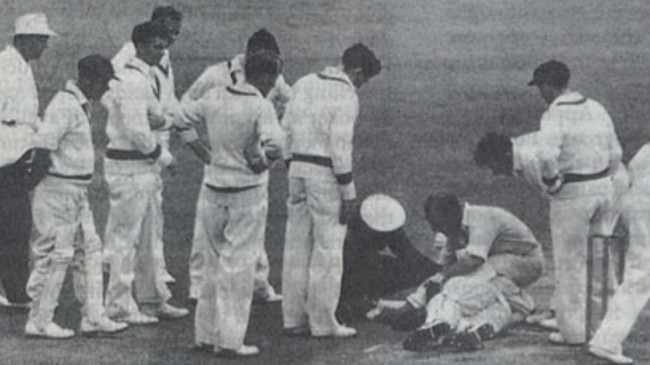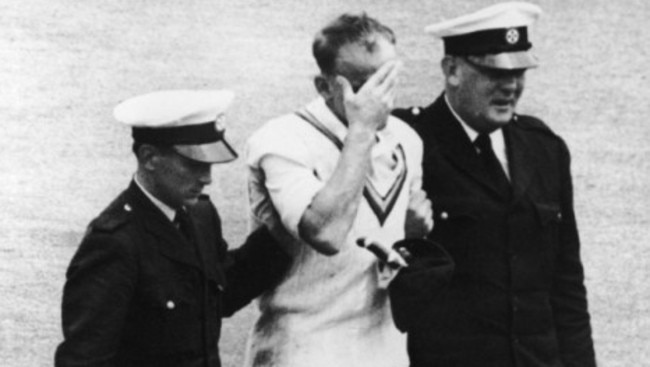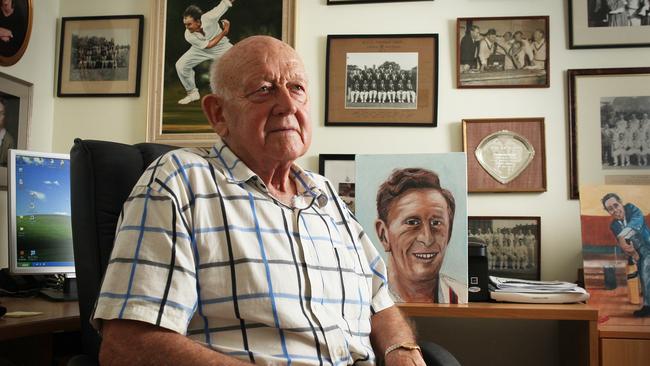‘Typhoon’ Frank Tyson remembered as one of cricket’s great bowlers
Not even a knock on the head from Ray Lindwall could prevent Frank Tyson from living up to his nickname in the 1954-55 Ashes series

Today in History
Don't miss out on the headlines from Today in History. Followed categories will be added to My News.
It wasn’t exactly Bodyline but there was still plenty of bite in the fast bowling during the 1954-55 Ashes series. The English bowlers had given the Australian batsmen a bit of a bruising in Brisbane so, in the first innings in Sydney, Australian fast bowler Ray Lindwall let rip with a blistering short-pitched delivery against tailender Frank Tyson.
Tyson turned his back on the ball and copped a solid whack to the back of the head. Briefly knocked unconscious, he needed to be helped from the field. Fortunately, although he was smarting from the hit, the injury wasn’t serious and Tyson returned to the pitch. Just when it looked like Australia would win the match, Tyson made his move, firing in some thunderbolts of his own to take 6-85 to give England victory by 35 runs. It was satisfying revenge.


Tyson, who died this week on the Gold Coast, only had a brief career in Test cricket but left his mark on the game. He is now remembered as one of the fastest bowlers of all time.
He was born in Farnworth, Lancashire, England in 1930, but the family later moved to Middleton near Manchester. His father worked as a foreman at a factory that bleached and dyed cloth and was not much of a fan of cricket. Nor was his older brother David. But Frank grew up fascinated by the game, spending hours playing it with friends using makeshift equipment on a vacant lot. It was not until he was evacuated during the war that he went to a school with a proper cricket pitch.
At 15 he was accomplished enough to represent Middleton in the Central Lancashire Cricket League. He had an offer to try out for Lancashire but his aspirations to be a professional cricketer were quashed by his father who insisted he go to university. Before he could begin study he did his National Service, playing cricket for the army team. When he finished his service he played briefly for Lancashire but injuries resulted in his being left out of the team. By then he was already working on his degree in English literature at Durham University, but his increasing cricket commitments would stretch out the period of his study.
He joined the Northamptonshire county cricket team in 1952 and played against India during their county matches that year. In 1953 he made an impression on the Australian team, sending down some powerhouse deliveries, but he was still a diamond in the rough. With a run-up that started from deep in the outfield, his deliveries were fast, but lacked refinement.

He was selected to play for England against Pakistan in 1954. Sadly his father didn’t live to see this vindication of Tyson’s dream. He then travelled to Australia later that year to take part in his first Ashes Test. Even before the Sydney game there was speculation in the press about whether he was as fast as Larwood, the man who had given Australia such strife in the infamous Bodyline series.
Over the course of the 1954-55 Test series, he learned to shorten his run-up and to improve the accuracy of his bowling, to devastating effect. Australian batsmen came to fear the bowler nicknamed “Typhoon Tyson” and he was soon being judged as one of the best fast bowlers the game had seen.
According to Don Bradman, Tyson was “the fastest bowler I have ever seen” and Richie Benaud would later write “For a short time, Frank Tyson blasted all comers”.
On his tour of Australia he met Ursula Miels, who he later married and with whom he had three children.
He returned to England a hero and made a good showing against South Africa in 1955 but was dogged by injury and passed his peak. He retired in 1960, wrote his autobiography A Typhoon Called Tyson, and turned to teaching. But the paltry wages in England inspired him in 1962 to emigrate to Australia to teach. Occasionally returning to the pitch to play charity matches, he opened an indoor cricket school in the 1970s after a long career as a teacher. In 1975 he became head of coaching for Victorian Cricket and later was head coach in Queensland.
He also wrote cricket columns for various publications and commentated on ABC Radio. He and Ursula retired to the Gold Coast in the 1980s.
Originally published as ‘Typhoon’ Frank Tyson remembered as one of cricket’s great bowlers



